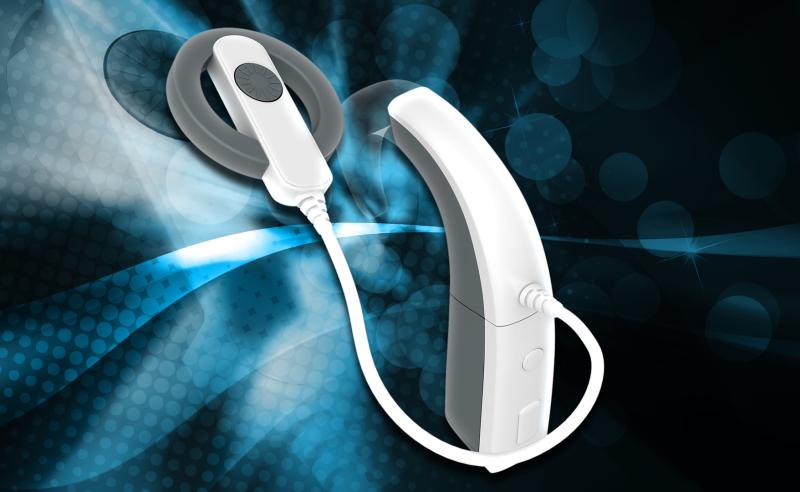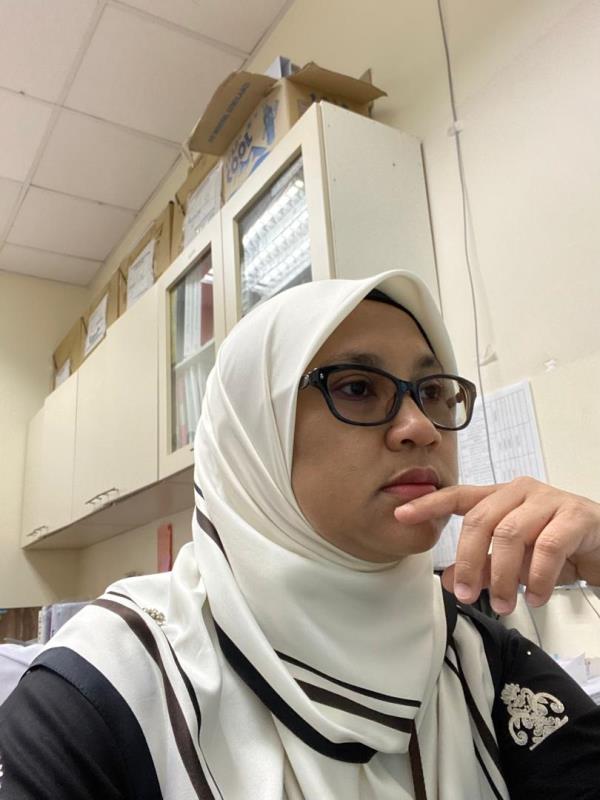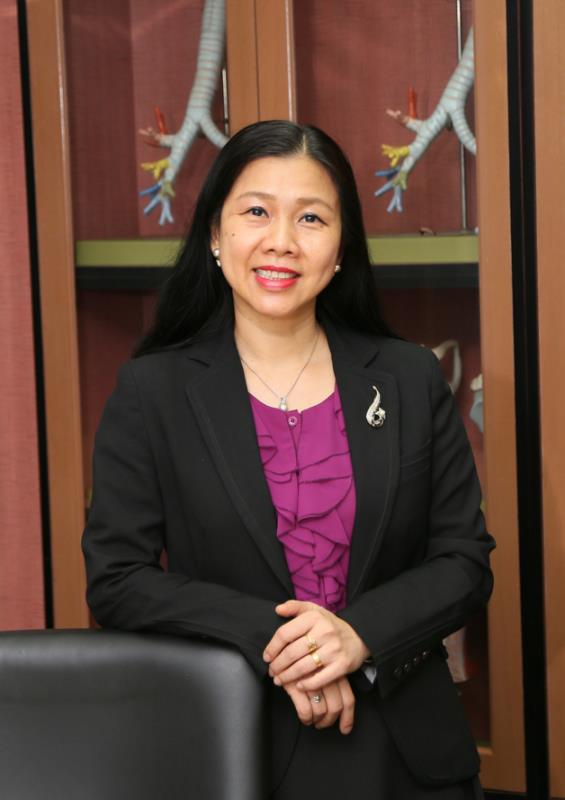A roundtable on cochlear implantation





 Pn Yuzaida Md Yusof
Pn Yuzaida Md YusofThe implants are lighter and more discreet, with some models eliminating the need for an over-the-ear processor. Advances in electrode design help preserve natural hearing while making surgery less invasive. Most modern implants are MRI-safe, more durable, and have longer battery life, with rechargeable options available. Some models also combine hearing aid technology with cochlear implants for a more natural listening experience.
 Associate Professor Dr Noor Dina Hashim
Associate Professor Dr Noor Dina Hashim
Who is the ideal candidate for cochlear implantation, and how has this changed with advancements in technology?
Noor Dina: Traditionally, the ideal candidate for cochlear implantation was an individual with bilateral severe-to-profound sensorineural hearing loss who received limited benefit from conventional hearing aids. Candidates were often pre-lingually deafened children implanted before critical language development periods or post-lingually deafened adults. However, with advancements in CI technology, the candidacy criteria have expanded significantly.
Individuals with moderate-to-severe hearing loss who struggle with speech perception, even with hearing aids, are now considered suitable candidates. CIs have also been approved for patients with single-sided deafness or asymmetrical hearing loss, improving speech perception in noisy environments and sound localization. Additionally, age is no longer a major limiting factor, as improved surgical techniques and post-implant rehabilitation have made CIs a viable option for older adults.
Patients with low-frequency residual hearing can benefit from hybrid or electric-acoustic stimulation (EAS) implantations, which combine acoustic amplification with electrical stimulation for a more natural hearing experience. These advancements have broadened access to cochlear implantation, offering improved hearing outcomes and quality of life for a more diverse range of patients.
What improvements in hearing outcomes have been observed with newer generations of cochlear implants?
Noor Dina: Recent advancements in CI technology have significantly improved hearing outcomes across various aspects. Innovations in surgical techniques, including the use of thinner electrodes and soft insertion methods, help minimize trauma to the cochlea, preserving residual hearing, leading to better outcomes, particularly for hybrid or EAS users. The development of mid-scala array electrodes generally provides better speech clarity in noise due to reduced current spread and closer proximity to the modiolus. Additionally, newer CI electrodes also have improved pitch perception, enabling users to enjoy music with greater clarity. Wireless connectivity between bilateral implants has also enhanced binaural processing, improving spatial hearing and sound localization.
Moreover, with an expanded frequency range, newer electrode arrays stimulate a broader spectrum of frequencies, further refining tonal perception and speech clarity. Remote programming and AI-driven customization have also revolutionized post-implant care, allowing for remote mapping and performance optimization without frequent clinic visits. These advancements have collectively enhanced the overall auditory experience, leading to better communication, greater social engagement, and improved quality of life for CI users.
 Wan Fazlina Wan Hashim
Wan Fazlina Wan Hashim
How do features like wireless connectivity and AI integration enhance cochlear implant performance?
Wan Fazlina: Wireless connectivity and artificial intelligence (AI) have transformed CIs, making hearing clearer and more natural. With wireless technology, users can connect their implants directly to smartphones, televisions, and other devices, allowing them to stream sound without interference from background noise. This makes conversations, phone calls, and entertainment much easier to enjoy. AI takes this a step further by automatically adjusting the implant’s settings based on the surrounding environment. It recognizes different sounds, separates speech from background noise, and adapts in real time to improve clarity. This helps users hear better in noisy places without constantly adjusting their devices. AI also learns from the user’s preferences over time, making hearing more comfortable and effortless. These smart features bring CIs closer to natural hearing, helping users communicate more easily and improving their overall quality of life.
What role does sound processing technology play in mimicking natural hearing?
Wan Fazlina: CIs use advanced sound processing technology to help people with severe to profound hearing loss understand speech and sounds more naturally. Unlike hearing aids, which simply amplify sound, CIs convert sound into electrical signals that stimulate the auditory nerve. Advanced processing strategies filter out background noise, making speech clearer even in noisy environments. Directional microphones focus on important sounds, much like how our brains naturally tune in to voices in a crowd. The implant also breaks sound into different frequency bands, mimicking how the inner ear processes tones, improving the ability to distinguish speech sounds and enjoy music. AI-powered technology automatically adjusts to different environments, making listening effortless. For those with implants in both ears, synchronized sound processing restores spatial awareness, helping users determine where sounds are coming from. While CIs do not fully replicate natural hearing, ongoing advancements are making them sound more lifelike than ever before.
 Professor Emeritus Dato’ Dr Lokman Saim
Professor Emeritus Dato’ Dr Lokman SaimHow can healthcare systems and manufacturers work together to make this technology more accessible?
Lokman: Health systems and manufacturers can collaborate to make CI technology more accessible by focusing on education, training, financial support, and innovative partnerships. Joint efforts in educational and awareness programs can promote early hearing loss detection and rehabilitation through widespread screening initiatives. Manufacturers can also invest in training ENT surgeons, audiologists, speech therapists, and other professionals to ensure high-quality care. Additionally, partnerships with NGOs and charities can help subsidize costs, making implants more affordable for those in need. Developing long-term public-private financing models can further support accessibility by ensuring sustainable funding and reducing financial barriers for patients.
 Professor Dr Goh Bee See
Professor Dr Goh Bee See
What are the upcoming trends or innovations in cochlear implant technology?
Goh: Upcoming trends and innovations in CI technology focus on optimizing electrode placement, improving functionality, and enhancing user experience. Advances include designing electrodes that extend beyond the cochlea to accommodate congenital anomalies, ensuring better auditory outcomes. Researchers are also exploring electrodes capable of delivering medication to help preserve residual hearing, particularly in cases where low-frequency thresholds remain intact. The development of fully implantable CIs, eliminating the need for external processors, could reduce maintenance costs and improve convenience. Additionally, future implants are being designed to withstand higher Tesla MRI scans, minimizing image artifacts and improving post-surgical imaging quality. These advancements aim to enhance performance, usability, and accessibility while reducing long-term costs.
How do you see the role of cochlear implants expanding in managing hearing loss?
Goh: CIs are proven to be safe devices, and implantation surgery is suitable for very young children and older populations. Hence, CIs can be expanded to many other causes of hearing loss, including abnormal anatomy and residual hearing individuals. The expansion of cochlear implantation to include younger children is likely to happen soon as the US FDA looks into the indication for children less than 6 months of age in the prelingual group. In many cases, those with acquired causes of hearing loss, such as chronic otitis media or tumour, are not adopting CIs as hearing rehabilitation even though there are potential cases that may benefit from such implants. The effectiveness of CI is widely studied and has been shown to be beneficial in reducing social isolation and depression or even dementia in the post lingual group. Furthermore, better hearing also improves the quality of life both in children and adults.